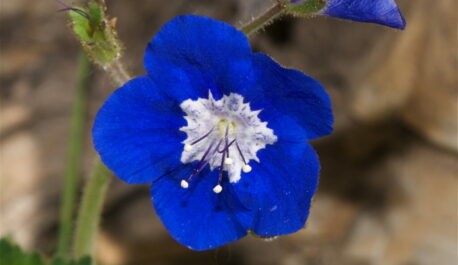
Heading Level 4
In my ongoing exploration of the enigmatic world of botanical wonders, I am drawn to the captivating mystery surrounding the absence of true blue flowers. Flowers, those exquisite manifestations of nature’s artistry, offer a breathtaking array of colors, from the passionate reds of roses to the gentle yellows of daisies and the majestic purples of irises. Yet, amidst this vibrant tapestry, the elusive true blue remains a rarity, capturing the imagination of botanists, artists, and gardeners alike. Join me as we delve into this intriguing phenomenon, exploring the scientific intricacies, cultural significances, and aesthetic allure behind the quest for true blue blooms.
The mystery of the missing true blue amidst the profusion of floral colors has long fascinated botanists and horticulturists. Despite the abundance of pigments responsible for a myriad of hues, the creation of a pure blue bloom seems to defy nature’s palette. Despite concerted efforts through breeding programs and genetic manipulation, the quest for genuine blue flowers has remained an elusive endeavor, shrouding these blooms in an air of mystique within the botanical realm.
Beyond mere botanical fascination, the allure of blue flowers extends deeply into human culture and symbolism. Blue, with its association with the vast sky and boundless ocean depths, has historically been revered for its rarity and beauty. Across diverse cultures, blue flowers carry profound symbolic meanings, evoking emotions of tranquility, mystery, and longing. From ancient myths to modern folklore, these blooms are often imbued with tales of magic and enchantment, adding to their allure and mystique.
At the heart of understanding flower colors lies the intricate world of pigments, where chemical compounds dictate the hues that adorn petals. While a diverse array of pigments contributes to the kaleidoscope of floral colors, the absence of true blue pigments presents a puzzling challenge. Despite extensive research, the biochemical pathways necessary for producing a pure blue hue remain elusive, perplexing botanists and scientists alike.
In the pursuit of true blue flowers, scientists have turned to genetic manipulation as a promising avenue. Through genetic modification techniques, researchers aim to manipulate the biochemical pathways responsible for pigment synthesis, with the ultimate goal of engineering flowers capable of producing a pure blue hue. While significant progress has been made, challenges in controlling gene expression and stability persist, underscoring the complexity of this botanical puzzle.
Horticultural efforts to cultivate true blue hues in flowers have been ongoing for centuries, driven by both scientific curiosity and aesthetic appreciation. Through meticulous hybridization and selective breeding, horticulturists strive to introduce blue pigmentation into flower varieties, enriching the diversity of floral offerings available to enthusiasts worldwide.
Within the vast tapestry of floral diversity, rare instances of naturally occurring blue flowers emerge as botanical marvels. Examples such as the Himalayan blue poppy and the blue flax stand as testaments to nature’s occasional embrace of the elusive blue hue. Studying these natural exceptions offers valuable insights into the biochemical and ecological factors underlying the production of blue pigments in flowers, further unraveling the mysteries of nature’s palette.
The quest for true blue flowers continues to captivate the imagination and fuel scientific inquiry. While challenges persist, ongoing research offers hope for potential breakthroughs in the future. As we unravel the mysteries of nature’s palette, let us not only celebrate the allure of blue blooms but also embrace the rich diversity of colors that grace our gardens and landscapes, each a testament to the boundless wonders of the natural world.
“A blockquote highlights important information, which may or may not be an actual quote. It uses distinct styling to set it apart from other content on the page.”

Dan Westwood
Master Gardener
